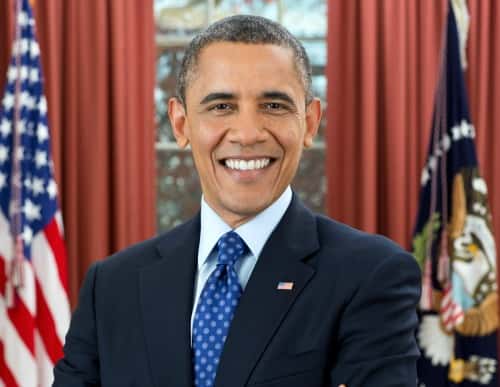 President Barack Obama has issued an executive order requiring the federal government to reduce its direct greenhouse-gas (GHG) emissions by at least 40% over the next decade. Although the comprehensive order calls for federal agencies to use more renewable energy, become more energy efficient, and reduce water intensity, it also mandates that their fleets cut per-mile GHG emissions by 30% by fiscal year (FY) 2025 and incorporate more zero-emission vehicles (ZEVs) and plug-in hybrid electric vehicles (PHEVs).
President Barack Obama has issued an executive order requiring the federal government to reduce its direct greenhouse-gas (GHG) emissions by at least 40% over the next decade. Although the comprehensive order calls for federal agencies to use more renewable energy, become more energy efficient, and reduce water intensity, it also mandates that their fleets cut per-mile GHG emissions by 30% by fiscal year (FY) 2025 and incorporate more zero-emission vehicles (ZEVs) and plug-in hybrid electric vehicles (PHEVs).
The executive order says that with a footprint including 360,000 buildings, 650,000 fleet vehicles, and $445 billion spent annually on goods and services, the federal government has the potential to make a significant impact on U.S. emissions.
Within 90 days of the order, the head of each agency must propose certain percentage-reduction targets to the Council on Environmental Quality and the Office of Management and Budget.
The order also calls for regional coordination. Within 180 days of the date of the order, agencies, including the U.S. Environmental Protection Agency and General Services Administration (GSA), must convene regional interagency workgroups to identify and address ways to meet the executive order's various goals.
This includes sustainable operations of federal fleet vehicles, including identification and implementation of opportunities to use and share fueling infrastructure and logistical resources to support the adoption and use of alternative fuel vehicles, including E-85-compatible vehicles, ZEVs and PHEVs, and compressed natural gas vehicles.
Beginning in FY 2016, each head is directed to implement the provisions of the order, where it is “lifecycle cost-effective” and “unless otherwise specified.”
Cleaner fleets
If an agency operates a fleet of at least 20 motor vehicles, the agency is ordered to improve fleet and vehicle efficiency and management by doing the following:
– Determining the optimum fleet inventory, with emphasis placed on eliminating unnecessary or non-essential vehicles from the agency's fleet inventory.
– Taking actions that reduce fleet-wide per-mile GHG emissions from fleet vehicles, relative to a baseline of emissions in FY 2014, no less than 4% by the end of FY 2017; no less than 15% by the end of FY 2021; and no less than 30% by the end of FY 2025.
– Planning for agency fleet composition such that by Dec. 31, 2020, ZEVs or PHEVs account for 20% of all new agency passenger vehicle acquisitions; and by Dec. 31, 2025, ZEVs or PHEVs account for 50% of all new agency passenger vehicles. The order's language, though somewhat ambiguous, also suggests acquiring ZEVs or PHEVs in other vehicle classes, where practicable, might count double credit toward the targets.
– Planning for appropriate charging or refueling infrastructure or other power storage technologies for ZEVs or PHEVs and opportunities for ancillary services to support vehicle-to-grid technology.
The order also directs the GSA to ensure that vehicles available to agencies for either lease or sale, at or below market cost, through its vehicle program include adequate variety and volume of alternative fuel vehicles.
Notably, the head of an agency may exempt law enforcement, protective, emergency response, or military tactical vehicle fleets from the provisions of the executive order.
Furthermore, the U.S. Department of Energy is directed to assist the U.S. Postal Service (USPS) in evaluating the best alternative and advanced fuel technologies for the USPS fleet and report on such progress annually as part of the planning requirements of the order.
The entire executive order is available here.






